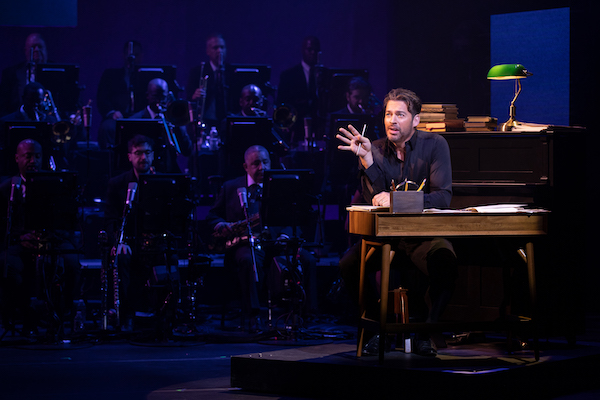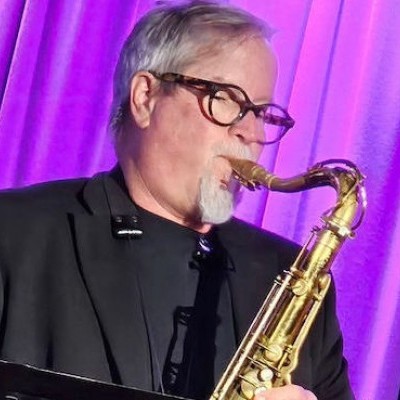Oct 28, 2025 10:47 AM
In Memoriam: Jack DeJohnette, 1942–2025
Jack DeJohnette, a bold and resourceful drummer and NEA Jazz Master who forged a unique vocabulary on the kit over his…

Harry Connick Jr. performs his new one-man show Sept. 21 at the Durham Performing Arts Center in Durham, North Carolina.
(Photo: Courtesy Durham Performing Arts Center)With a career as a multiplatinum jazz singer, pianist, composer and arranger spanning more than 40 years—and two previous shows with his band on Broadway in 1990 and 2010, the latter taped for PBS’s Great Performances—there’s no doubt by now that Harry Connick Jr. knows how to put on a concert.
But given the preshow publicity of his Durham Performing Arts Center performances Sept. 21 and 22 in Durham, North Carolina, Connick seemed to be aiming for something greater in his current one-person show, A Celebration of Cole Porter. The production’s Broadway opening, slated for December, follows the planned release in Oct. 25 of True Love: A Celebration Of Cole Porter, a set of Porter songs that marks Connick’s first album-length dive into another songwriter’s work—and his first album for Verve Records as well.
Connick’s not the first quintuple-threat (as a musician, film, television and stage actor and dancer during the past 30 years) to have recently attempted to merge his various passions on the same stage on the same night. Hugh Jackman has mixed theatrics, film, music, dance—and no small amount of spectacle—in this year’s world tour of The Man. The Music. The Show. But Connick’s Celebration clearly is a more intimate show, which only benefits pensive Porter numbers like “Why Can’t You Behave” and “In The Still Of The Night,” while magnifying the exuberance of big-band blowouts like “You’re Sensational.” Conductor Andrew Fisher’s 26-piece orchestra was tight, and the pacing and flow of the 90-minute show repeatedly shifted emotional gears without dawdling or feeling rushed.
But at this point in its development, A Celebration of Cole Porter remains a show in search of a spine. That most likely is because Connick also wrote and directed this production, in addition to his other on-stage duties, including arranging and orchestrating the score. (That part was demonstrated in an entertaining and even educational midshow moment during “Night And Day,” in which various compositional choices were displayed on animated charts via Beowulf Boritt and Caite Hevner’s projections and performed in real-time by the band.)
In an inventive opening film sequence that seemed like a GQ riff on an Indiana Jones theme, a stylish Connick scales a multistory monument to Porter in Peru (Indiana, that is, Porter’s home town), and is granted admission to its interior after solving a musical riddle. Penetrating the depths, he walks down a corridor lined with books into a room where photographs of Porter swirl all about him, before accessing a sanctum sanctorum whose minimal, all-white aesthetic is punctuated by the presence of an old-time upright piano. A single keystroke sends Connick, the band and audience down a musical rabbit hole for the lively first number, “Anything Goes.”
Some stiffness in the show’s initial numbers could be written off to opening-day jitters and its first public performance. An early audio mix that partially buried Connick’s vocals, muddied the strings and made his first piano solo painfully shrill didn’t help. Still, by the show’s fourth number, “It’s All Right With Me,” Connick and crew seemed finally fully in the groove.
But no sooner did our host guarantee in midsong patter that we were “spending the evening inside Cole Porter’s brain,” we immediately were ejected for an impromptu road trip to New Orleans on a song Connick wrote instead. On Boritt and Alexis Distler’s Preservation Hall knockoff of a pop-out set, a stirring six-piece band gave a raw and rousing Dixieland read of “Take Her To The Mardi Gras.” Though tenor saxophonist Jerry Weldon held court alongside Geoff Burke’s piquant clarinet, and the wit in Connick’s lyrics could be taken as a tribute to Porter’s gentle ribaldry, it remained an odd detour. It wasn’t the last one of the evening.
After a sinister bass solo from Neal Caine, distracting videography placed “Love For Sale” in a late-night warehouse district where prostitutes plied their trade at a discreet distance, without providing any connection to the singer. A subsequent two-song montage suddenly situated Connick in a wheeled-on, midtown high-rise hotel set, where he found the chilliest, most plaintive notes for “In The Still Of The Night” and “All Of You.” The theatrically static scene, however, gave the singer’s character less context or plot than one of his popular, atmospheric music videos.
Some sections worked better. The subsequent spectacle of prefilmed pianistic pyrotechnics, tap dance by choreographer and performer Luke Hawkins, and show-biz spectacle for “Begin The Beguine” was amusing and astounding in equal parts.
But for all of its considerable musical achievements, the tour of dramatic journeys through the meanings of each song in Porter’s mind was abandoned early on. At this juncture, A Celebration of Cole Porter feels like a show in which a musical genius, but a novice when it comes to scripting and directing, threw a series of ideas against the wall without following through on most of them. It’s still an impressive concert, hands down, but falters as it tries to reach for more. DB

Jack DeJohnette boasted a musical resume that was as long as it was fearsome.
Oct 28, 2025 10:47 AM
Jack DeJohnette, a bold and resourceful drummer and NEA Jazz Master who forged a unique vocabulary on the kit over his…

“I’ve told students, ‘I don’t mind if you use AI for this or that project,’” says MIT’s Pascal Le Boeuf. “‘But you need to tell me.’”
Sep 18, 2025 11:14 AM
A standard joke when it comes to discussing artificial intelligence, or AI, is that it’s developing so rapidly that…

Chuck Manning Works for NASA … and plays jazz.
Sep 18, 2025 11:23 AM
Congratulations! After years of study, you’ve earned your degree in jazz performance. But let’s face it: Making a…

Gadabout Season developed over many months of recording sessions in Brandee Younger’s East Harlem living room.
Sep 16, 2025 11:52 AM
When she’s on the road, Brandee Younger enters a hybrid state of action and contemplation. Free of daily distractions…

Cleo Laine, 1927–2025
Sep 16, 2025 10:03 AM
The music world mourns the loss of three important artists from the realms of jazz, blues and beyond with the recent…